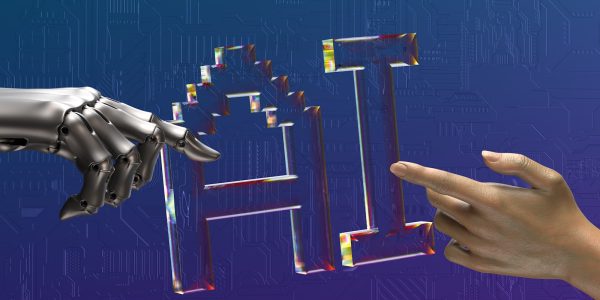HR executives have adapted to shifting business needs for years, be it ushering in more authentic leaders, flattening hierarchies or upskilling workers for the next wave of tech. But those changes now seem incremental compared to the transformation ahead.
In the wake of generative AI, preparing for what’s next no longer comes with a clear roadmap, says Becky Frankiewicz, Chief Commercial Officer at ManpowerGroup, who co-hosted The Exchange, an event by ManpowerGroup and the World Business Council for Sustainable Development that took place at MxD, a digital manufacturing institute in Chicago. As part of the event, ManpowerGroup also launched its Work Intelligence Lab to lead the charge in AI-powered workforce transformation.
“The question becomes: how do you create workforce readiness that’s not skills-related without clear evidence of what works?” Frankiewicz told an audience of HR, talent and sustainability leaders as well as operational and strategy executives. The numbers are sobering: 39% of current job skills will be obsolete by 2030 according to World Economic Forum research.
Riding the ‘permacrisis.’
The starting point? Acknowledging the need for agility.
Today’s executives must navigate a shift from a potential human shortage that started two decades ago to today’s more urgent skills-based gap. In other words, if companies don’t get it right, then positions go unfilled even as others can’t find new jobs. “Leaders need to take on the heavy lift of building out a future talent pool through upskilling their workers on learning and agility with more urgency,” she adds.
More importantly, she urges companies to adopt a mindset built for volatility. With major ongoing global conflicts, including in Ukraine, the simmering trade war with China and the potential for an economic downturn, many leaders are operating in what Frankiewicz calls a “permacrisis.” For executives, it means embracing instability rather than waiting for it to pass, which runs counter to the human instinct for consistency and closure. “The deep breath many of us took after Covid was a mistake — you have to stay on the edge of your seat ready for what’s next,” she says.
Designing for chaos.
But it’s not just about anticipating chaos, it’s about designing systems that can adapt and thrive within it, says Dean Carter, a consultant who has held chief human resources officer roles at top companies including Patagonia. Thinking about chaos as a ladder — one you can climb or stay frozen on — makes it easier to recognize new possibilities, Carter told the audience.
To start, Carter said it’s essential to create a shared north star for employees, some of whom may feel conflicted about the possibilities of AI. “You have to have a vision to know where you’re going and engage your people by communicating along the way,” Carter says.
Restructuring an AI-enabled workforce.
While cost-cutting often comes up when leaders hear AI, futurist and workplace expert, Alexandra Levit told the audience that the reality may be different. AI today still needs to be monitored by humans, which will lead to new roles or redefined ones. It’s also a nod to the future of how AI will be deployed throughout organizations. “Every part of AI based process needs to be looked over by talent on a daily basis,” she says. Additionally, some employers to be disappointed by their AI capabilities in the short term, until the talent pool and roles evolve to unlock its full potential, Levit told the audience.
At ManpowerGroup, the Work Intelligence Lab is already putting this vision into practice. Tracking data in real-time from more than 70 countries, it offers insights into hiring trends, worker sentiment and the future of work. Along with how AI and automation are reshaping roles, required skills and career paths.
For companies, initiatives like this are an essential step toward building a future with AI. “We need to embody AI as a culture, rather than simply using it as a tool,” Levit adds.
